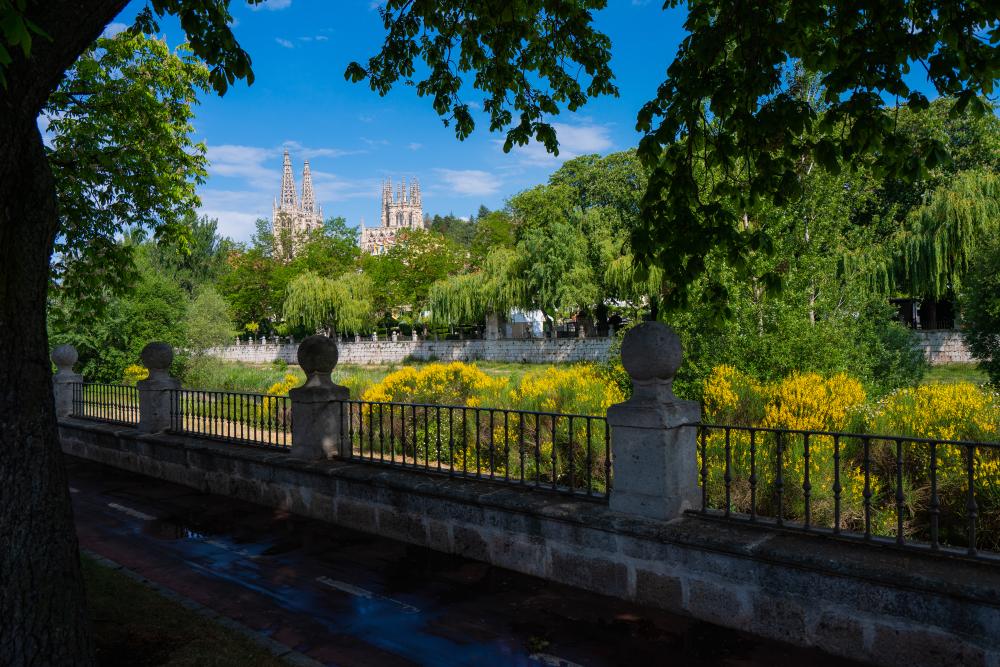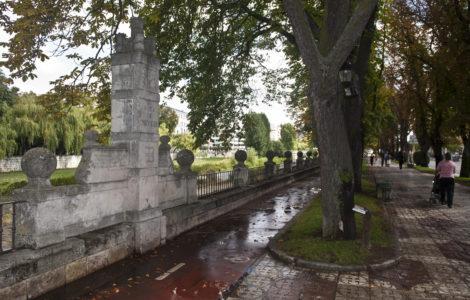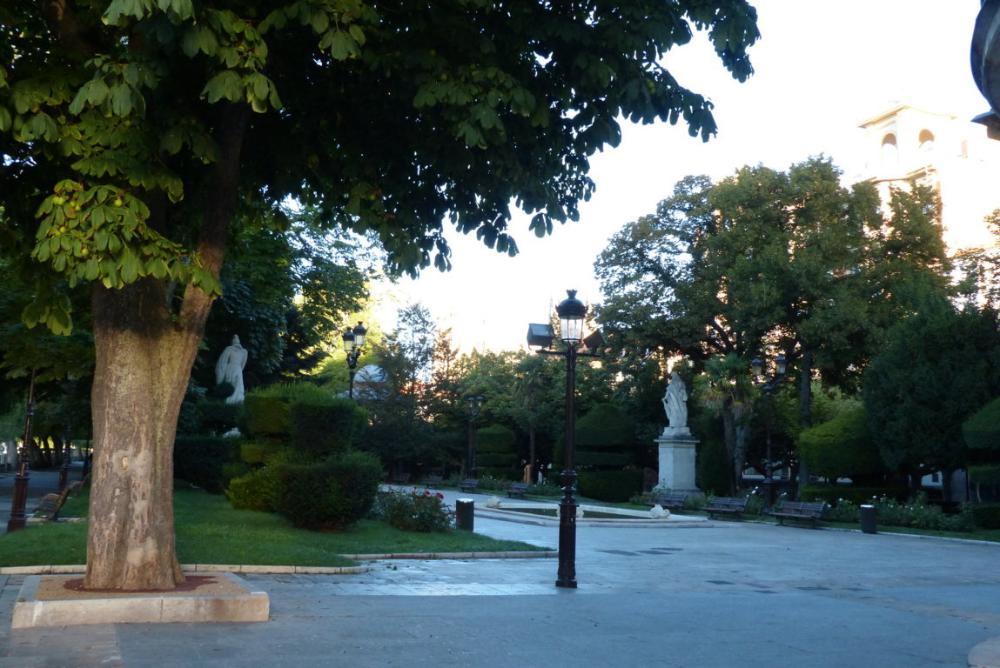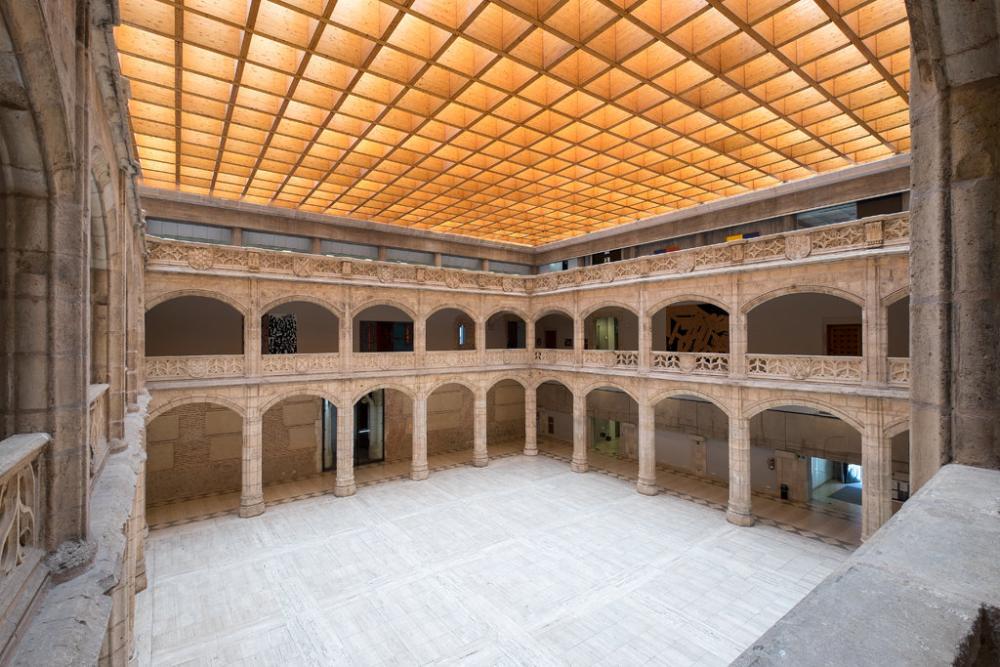1- GATE OF SANTA MARÍA
The gate of Santa María marks the start of the route. Built in around 1540 by Juan de Vallejo and Francisco de Colonia, it was supposed to be a tribute by the city to Emperor Charles V. Inside the gate you can visit the Mudejar style room of “Poridad” and a beautiful mural by Vela Zanetti.
With a reverence to the Castilian heroes that dominate the facade we can go back a few metresalong the renovated bridge of Santa María and look out onto the pristine waters of the Arlanzón. The wealth of vegetation and variety of fauna on its banks is surprising. Mallards, herons, troutand a few otters make this river a real ecological haven.
2- PASEO DEL ESPOLÓN
There’s no better way to feel like a local in Burgos than having a relaxed walk along El Espolón, an 18th century architectural garden with romantic French-styledetails. It is especially delightful to meander between the rows of interlaced plane trees that are located on its main pavement, and observe and be observed, as has been done continuously throughout its 200 year history.
Between beautiful modernist houses and next to the classicist building of the Sea Consulate we reach the Four Kings. In the middle of the promenade, four stone sculptures donated by the king Charles III can been seen, representing historic public figures of the city.
3-PLAZA MAYOR
Right opposite is the neoclassical City Hall, dating back to the end of the 18thcentury. Though its elegant arches we are able to see the Plaza Mayor. Its irregular, large and porticoed space, dominated by a bronze statue of King Charles III, is still the most important part of the city. On our way to Santo Domingo square, we must visit the long and narrow streets of Almirante Bonifaz and La Moneda. Both of them are full of elegant houses built during the 19th century, decorated with the typical glazed balconies, very common in local architecture.
4- CASA DEL CORDÓN
Along Santander Street and the charming“Soportales de Antón” (arched covered walkways) we reach Plaza de la Libertad, where the Casa del Cordón stands. This magnificent treasure of local civilian architecture used to be the palace of the mighty Constablesof Castile and was designed at the end of the 14th century by Simón de Colonia.
5- PLAZA DEL MÍO CID
The route continues to the meeting point of the nearby Plaza del Mio Cid,another of the entrances to the Paseo del Espolón, where the ProvincialPalace and the Teatro Principal are located. In the middle of the Square stands the equestrian, bronze-cast statue of El Cid, designed by Juan Cristóbal, that has become the most well-known iconic image of this local hero.
From this point, after crossing the monumental bridge of San Pablo, we reach the surroundings of the complex of the Museum of Human Evolution.






